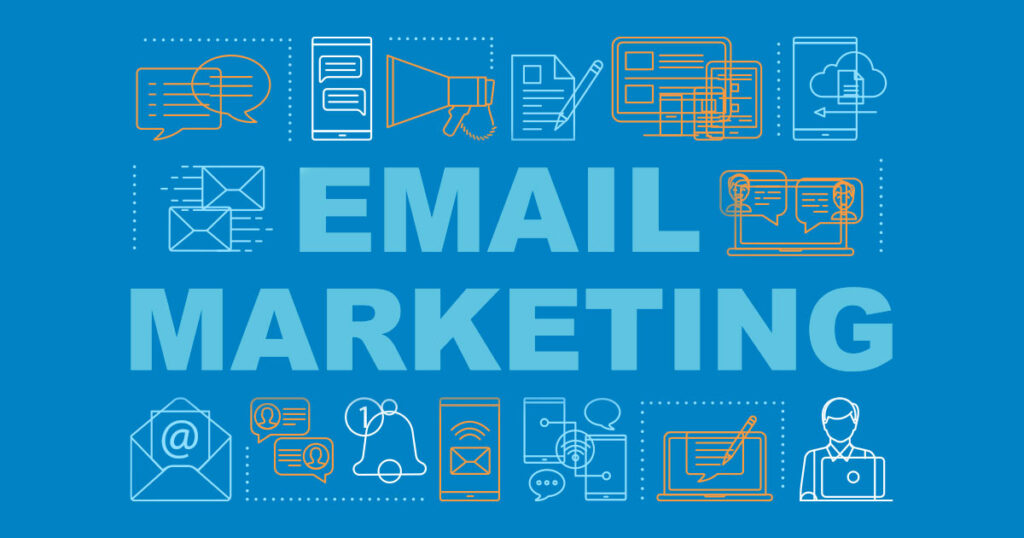Especially for smaller businesses working with relatively tight advertising budgets, email marketing can be among the most cost-effective ways to promote a business and keep customers coming back. The reasons are simple: Email marketing is inexpensive, and it works.
In fact, according to research, email marketing produces an average ROI of $36 for every dollar spent on it. (This high rate of return places email marketing well ahead of other commonly used marketing tactics such as SEO, catalogs, mobile ads, and internet display ads in this area of measurement.) And studies show that, perhaps largely as a result, 81% of small and midsize businesses use email marketing to attract new customers while 80% use the tactic to keep them coming back.
But for email marketing to reach its peak effectiveness, it must be employed the right way. To get more out of their email marketing efforts, businesses should consider employing any or all these six strategies for increasing the impact of their marketing emails:
- Establish goals and a strategy up front: Especially if a business is new to email marketing, it can be tempting to dive right in and start sending emails. But by first putting some serious thought into the goals they are trying to achieve with their email marketing campaigns and how they are going to reach them, businesses can better evaluate the effectiveness of their efforts moving forward. Further, having clear goals and a strategy will put a business on better footing should it need to adjust its tactics moving forward. Doing so can also help a business’s team members better maintain their focus, prioritize their efforts, delegate responsibilities, hold stakeholders accountable and see how their email campaign efforts fit into the big picture for the enterprise.
- Automate email efforts: Today’s businesses have a long list of options to choose from when looking to automate their email marketing efforts. And whether a business chooses Constant Contact, Mailchimp, Drip, Klaviyo or any other quality email automation platform, the tools they provide can make the job much easier and substantially less labor-intensive. From prebuilt templates and drag-and-drop email editors to AB testing assistance, segmentation tools and personalization support, the highly powerful and effective tools these platforms can provide are well worth leveraging.
- Aim for the right audience: Today’s connected consumers get a lot of marketing emails, making the messages easy to overlook. Or consumers might simply choose to ignore some marketing messages, which is especially true when a brand’s email is not relevant to the recipient. To combat this problem and help ensure that their emails are being sent the right consumer audiences, businesses should be careful to create accurate, high-quality email databases from the start. Further, by gathering and retaining as much information as possible about actual and prospective customers, their product/service preferences and their buying habits, businesses can use this stored data to segment their recipient lists when sending emails. This, in turn, can help ensure they are delivering relevant messaging to the right consumers. Lastly, once their email databases are built, businesses should make regular efforts to keep them optimized.
- Make subject lines stand out: If an email’s subject line fails to grab a consumer’s interest, the contents of the email itself will never be seen. This effectively makes the subject line the most important copy in the entire email. To increase their email open rates, businesses should educate themselves on subject line best practices and be sure to put serious thought into the subject line used for each email they send.
- Be clear and concise: The goal of a marketing email should be to drive a defined action. (More on that just below.) And to avoid losing readers’ interest and attention before they take the sought-after action, the body copy of the email should be kept short and to the point. To break up large blocks of gray body copy as well as to make the email scannable, subheads and/or bold and italic text can be strategically employed. Further, all these elements should be used to quickly lead the reader to take the action being proposed.
- Urge a defined action: Each email a business sends as part of an email marketing campaign should have a defined purpose. Examples here can include having recipients visit a web page, fill out a form, contact a business representative or get a quote. And to make this purpose clear to consumers, as well as to increase the likelihood that the consumer will take the desired action, businesses should always include a clear call to action (CTA) in their emails. In addition, the CTA should be prominent and placed in a spot in the email where it is easy for consumers to find.
Looking to step up your business’s email marketing efforts? Increasing your office internet speeds can make the job easier in addition to boosting productivity and adding efficiencies related to all your team’s internet-connected tasks. Explore FTC’s business internet plans with speeds up to a blazing-fast 1 Gig available. And to get local, expert IT help for your business in a number of tech-related areas, including Managed IT, Cybersecurity, Hosted Services and more, visit FTC IT Solutions today.




